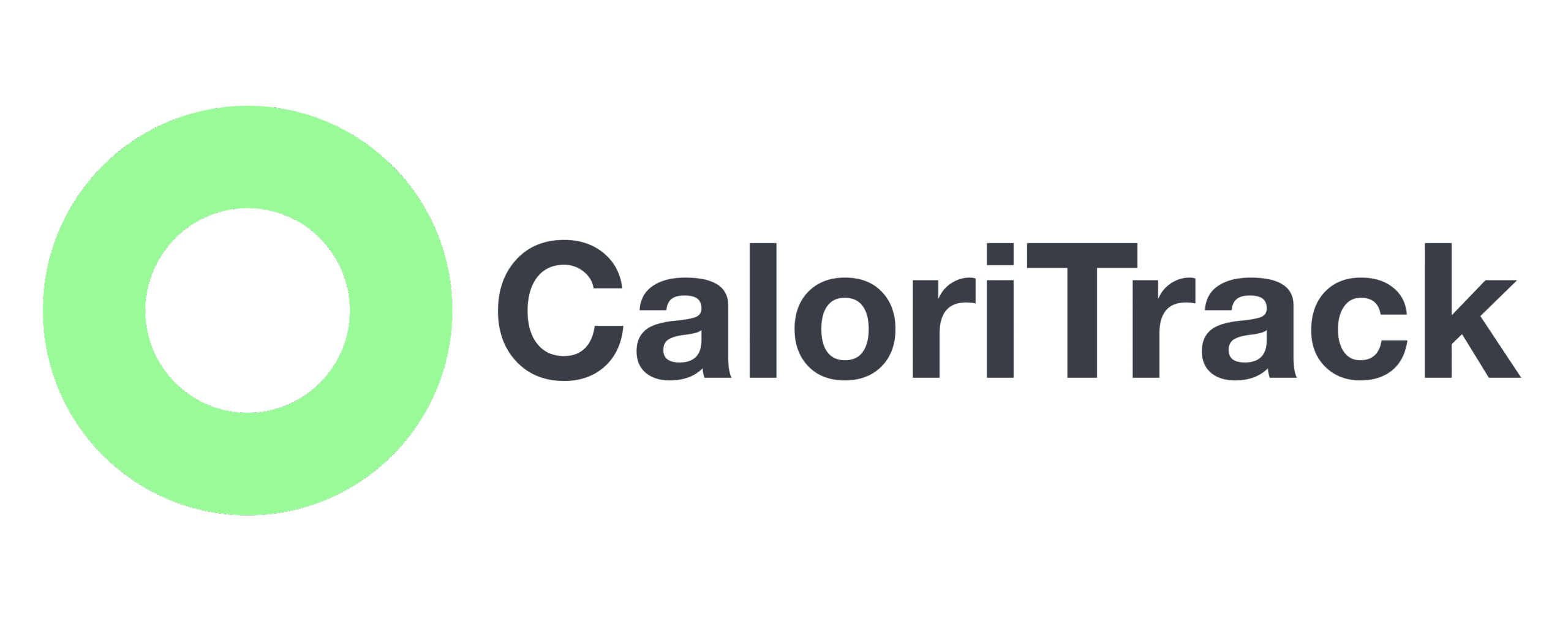
The Foundation of a Resilient Mind: How Leg Strength Forges Cognitive Longevity
Introduction: A New Paradigm for Healthy Aging
The aging of the global population represents one of the greatest triumphs and, simultaneously, one of the most significant challenges of the 21st century. People are living longer than ever; by 2050, the world’s population of people aged 60 and over will have doubled, reaching 2.1 billion.1 However, this increased longevity is accompanied by a growing prevalence of chronic diseases and geriatric syndromes, most notably cognitive decline and dementias. For decades, brain health and body health have been treated as separate domains, with the implicit belief that the mind follows an aging trajectory independent of physical vitality. This view is being dismantled by an avalanche of scientific evidence pointing toward an integrated health model, where the musculoskeletal system is not a mere bystander, but an active and dynamic regulator of brain health.2
At the heart of this new paradigm is a foundational study conducted by a team from King’s College London. The study, titled “Kicking back cognitive ageing: leg power predicts cognitive ageing after 10 years in older female twins,” provides one of the most rigorous pieces of evidence to date that physical fitness, specifically leg power, is a remarkably potent predictor of the brain’s aging trajectory.4 By following a group of twins for a decade, the researchers managed to untangle the complex interactions between genetics, environment, and lifestyle, reaching a surprising conclusion: the strength of our largest muscles may be a custodian of our mental acuity.4 This comprehensive report will break down the findings of this landmark study, explore the fascinating biological mechanisms underpinning the muscle-brain connection, contextualize these discoveries within the clinical syndrome of sarcopenia, and, finally, offer evidence-based strategies to build a future of physical and cognitive resilience.
Section 1: The King’s College London Twin Study: A Decade of Revelations
1.1 The Power of the Twin Design in Aging Research
To understand the true impact of lifestyle factors on aging, researchers face a monumental challenge: separating the influence of our daily choices from the powerful imprint of our genetic heritage and upbringing. The King’s College London study overcame this hurdle by using one of the most elegant and potent research designs available: the twin study.7 By recruiting participants from the TwinsUK registry, the largest of its kind in the United Kingdom, scientists were able to compare individuals who share a significant portion or all of their genetic makeup and their early environment.5
Monozygotic, or identical, twins originate from a single fertilized egg and share 100% of their genes. Dizygotic, or fraternal, twins develop from two separate eggs and share, on average, 50% of their genes, just like non-twin siblings. This natural structure allows for near-perfect control of genetic variables. If a difference in a health outcome, such as cognitive aging, is observed between two identical twins, this difference cannot be attributed to inherited genetics.8 Instead, it must be the result of environmental or lifestyle factors that have diverged over their lives. This approach, known as the “discordant twin” method, transforms an observational study, strengthening the inference that the discordant variable (in this case, physical fitness) has a causal relationship with the observed outcome. The study not only found a population-level correlation but consistently demonstrated that within a pair of twins, the sister with more leg power at the study’s outset maintained better brain health a decade later.4 This effectively isolates the impact of physical fitness from the vast influence of genetics and upbringing, suggesting that leg power is not just a passive marker of good overall health but may be an active agent in preserving brain function.4
Additional research, such as a study from the University of Virginia on “epigenetic clocks,” has reinforced the validity of this approach. That study demonstrated that even in identical twins, the twin who ages biologically faster (measured by epigenetic changes in gene expression) also shows greater decline in memory and thinking skills. This underscores how life experiences and environmental factors can alter biological function despite an identical genome, providing a precedent for the idea that differences in physical activity can lead to divergent brain-aging trajectories.8
1.2 Study Methodology: Measuring Strength and Cognition
The longitudinal study followed a cohort of 324 healthy female twins, with an average age of 55 (range 43-73) at the initial assessment in 1999.4 To ensure the robustness of their findings, the researchers employed objective and validated measurement methods.
- Measuring Leg Power: Rather than relying on physical activity questionnaires, which are known for their unreliability, the scientists chose an objective measure of muscular fitness: Leg Explosive Power (LEP).6 LEP was measured using the “Nottingham power rig,” a specialized device that assesses both the force and speed of leg extension.7 Each participant was instructed to push a pedal with as much force and speed as possible, “as if performing an emergency stop in a car.”7 The best of three attempts with the dominant leg was recorded. This metric was selected for its high reliability and because it is particularly sensitive to low-intensity physical activity and a better predictor of functional capacity than other measures like maximal oxygen consumption ($VO_{2}$ max).7
- Measuring Cognitive Change: Cognitive function was assessed at two time points, ten years apart (1999 and 2009), using the Cambridge Neuropsychological Test Automated Battery (CANTAB).5 This is a series of touch-screen computerized tests that assess cognitive domains known to be particularly vulnerable to aging, such as memory (pattern recognition, paired associates learning) and processing speed (simple and choice reaction time).7 The results from the various tests were combined using a statistical technique (principal component analysis) to create a global score of age-related cognitive change.7
- Statistical Analysis and Control of Variables: The researchers used linear regression models to assess the relationship between baseline LEP and subsequent cognitive change. Crucially, they adjusted their analyses for a wide range of potential confounding factors, including heart disease, diabetes, blood pressure, blood lipids, fasting glucose, diet, body mass index, smoking, and alcohol consumption.5 This statistical adjustment, combined with the discordant twin design, ensured that the observed association was not simply the result of other health or lifestyle factors.7
1.3 Striking Findings: Leg Power as a Predictor of Brain Health
The results of the decade-long study were described by the authors themselves as “striking.”5 They revealed a robust and consistent protective relationship between lower-body muscular fitness and the preservation of long-term brain health.
- Impact on Cognition: The main finding was that higher leg power at baseline significantly predicted less cognitive decline over the following ten years.4 This association held strong even after adjusting for all health and lifestyle factors. The magnitude of the effect was clinically significant: a 40-watt increase in LEP was associated with cognitive performance equivalent to that of a person 3.3 years younger.4 The within-twin-pair comparison was even more revealing. On average, if one twin had more powerful legs than her sister at the start of the study, a decade later she scored 18% higher on tests of memory and other cognitive functions.6
- Impact on Brain Structure: To investigate the physical correlates of these cognitive findings, a subgroup of 20 identical twin pairs underwent magnetic resonance imaging (MRI) approximately 12 years after the initial assessment.6 The results mirrored the cognitive findings. The twin with greater leg power at baseline tended to have a greater total volume of gray matter, the brain tissue responsible for information processing.4 Furthermore, the weaker twin had, on average, 26% larger ventricles. Ventricles are fluid-filled cavities in the brain, and their enlargement is a well-established marker of brain atrophy or shrinkage.4
One of the most critical revelations of the study was the distinction between objectively measured muscle power and self-reported physical activity. While LEP proved to be one of the strongest predictors of cognitive change, the study found only a “weak independent effect” of physical activity reported by the participants themselves.5 This has profound implications. It suggests that the neuroprotective benefits do not come simply from the perception of “being active” or the quantity of movement, but from the quality and physiological outcome of that movement—namely, the muscle strength and power that are built and maintained. LEP is a tangible indicator of neuromuscular health, whereas self-reports can be imprecise.6 Therefore, the public health message may need refinement: instead of simply advising “move more,” the focus should shift toward specific interventions, like resistance training, that demonstrably improve muscular fitness.
Table 1: Key Quantitative Findings from Steves et al. (2016) Study
| Measured Variable | Quantitative Finding | Source(s) | Interpretation of Finding |
| Cognitive Change at 10 years | Standardized beta coefficient ($Std\beta$) = $0.174$, $p = 0.002$ | 5 | Higher leg power at baseline significantly predicts less cognitive decline a decade later. |
| Cognitive Age Equivalence | A 40-watt increase in LEP is equivalent to being 3.3 years “younger” cognitively. | 4 | The protective effect of leg strength is large enough to be clinically relevant, offsetting more than three years of typical cognitive aging. |
| Total Gray Matter Volume at 12 years | $Std\beta$ = $0.362$, $p = 0.005$ | 4 | Leg power at baseline is associated with greater preservation of brain tissue more than a decade later. |
| Lateral Ventricle Size (within-twin comparison) | The weaker twin had ventricles that were 26% larger. | 4 | Lower leg power is associated with greater brain atrophy, a key marker of aging and neurodegeneration. |
Section 2: The Muscle-Brain Axis: Unraveling the Biological Dialogue
The findings of the twin study raise a fundamental question: how can the strength of leg muscles influence the health of an organ as distant and complex as the brain? The answer lies in a relatively new field of biology that is revolutionizing our understanding of exercise: the concept of skeletal muscle as an endocrine organ.
2.1 The Muscle as an Endocrine Organ: Introduction to Myokines
Traditionally, skeletal muscle was considered primarily a contractile tissue, responsible for movement. However, pioneering research, especially since 2003, has revealed that working muscle is one of the most active endocrine glands in the body.2 During muscle contraction—whether from walking, running, or lifting weights—muscle fibers synthesize and secrete hundreds of signaling molecules into the bloodstream. These molecules, known collectively as “myokines,” act as chemical messengers that travel throughout the body to communicate with other organs, including the liver, adipose tissue, pancreas, bones, and, crucially, the brain.2 This communication network, often referred to as the “muscle-brain axis,” forms the biological basis for how physical activity exerts its profound effects on cognitive function and mental health.11
2.2 Key Players: BDNF, Irisin, and Their Role in Neuroprotection
Among the hundreds of myokines discovered, several have emerged as key players in mediating the brain benefits of exercise.
- Brain-Derived Neurotrophic Factor (BDNF): Often described as “fertilizer for neurons,” BDNF is a protein vital for the health of the nervous system. It plays a fundamental role in neurogenesis (the birth of new neurons, especially in the hippocampus, the brain’s memory center), synaptic plasticity (the strengthening of connections between neurons, which is the basis of learning), and long-term neuronal survival.11 Exercise is one of the most potent known stimuli for increasing BDNF production. Some myokines released by the muscle, such as irisin, can cross the blood-brain barrier (the protective barrier separating the brain from the bloodstream) and directly stimulate brain cells to produce more BDNF.11
- Irisin: Discovered in 2012, irisin is a myokine produced in the muscle during exercise and has become one of the most promising candidates for explaining the exercise-brain health connection.13 Research has shown that irisin can cross the blood-brain barrier.11 In animal models, irisin has been shown to reduce brain inflammation, protect neurons from damage associated with Alzheimer’s disease, and is necessary for exercise-induced neurogenesis.11 A recent and-revealing human study found that the positive association between exercise and hippocampal volume was completely mediated by circulating irisin levels, providing the first direct human evidence that this myokine is a molecular mechanism linking physical activity to brain structure.14
Other myokines, such as insulin-like growth factor 1 (IGF-1) and cathepsin B (CTSB), also appear to play a role, often working in synergy to amplify the production and effects of BDNF, creating a cascade of neuroprotective events.12
2.3 Mechanisms of Action: Combating Inflammation and Enhancing Blood Flow
Myokines exert their effects through multiple interconnected pathways that, together, create a healthier environment for the brain.
- Reduction of Neuroinflammation: The aging process is associated with a state of chronic low-grade inflammation throughout the body, including neuroinflammation in the brain. This persistent inflammation is a key driver in the development of neurodegenerative diseases and age-related cognitive decline.16 Regular exercise has potent anti-inflammatory effects. Myokines released during physical activity can help suppress pro-inflammatory pathways and promote an anti-inflammatory environment, protecting neurons from damage and preserving their function.13
- Improvement of Cerebral Blood Flow: The brain is an organ with an extremely high metabolic demand, requiring a constant and robust supply of blood to receive oxygen and nutrients. Having strong leg muscles and a healthy cardiovascular system, maintained through exercise, improves overall vascular health.17 This ensures optimal cerebral blood flow, which is fundamental for the functioning and survival of neurons.17
This muscle-brain axis is not a one-way street; it represents a positive feedback loop for healthy aging. Exercise strengthens muscles, which in turn release myokines that enhance brain function. A healthier brain, with better executive function and a more stable mood (effects also associated with myokines like BDNF and irisin), is better equipped to plan, initiate, and maintain complex behaviors like a regular exercise routine.11 In this way, strengthening muscles is not an isolated act but the start of a virtuous cycle in which a stronger body and a more resilient mind reinforce each other, collectively slowing the aging process.
Table 2: Main Myokines and Their Neuroprotective Functions
| Myokine | Key Effects on the Brain | Source(s) |
| BDNF (Brain-Derived Neurotrophic Factor) | Promotes neurogenesis (birth of new neurons), synaptic plasticity (learning and memory), and neuronal survival. | 12 |
| Irisin / FNDC5 | Crosses the blood-brain barrier, increases BDNF expression, reduces inflammation, protects against Alzheimer’s pathology, and promotes neurogenesis. | 11 |
| IGF-1 (Insulin-like Growth Factor 1) | Supports neuron growth, survival, and metabolism; implicated in synaptic plasticity and cognitive function. | 12 |
| Cathepsin B (CTSB) | Crosses the blood-brain barrier and has been shown to increase BDNF levels and improve memory function. | 12 |
| IL-6 (Interleukin-6) | When released by muscle, it acts as an anti-inflammatory molecule, regulates brain energy metabolism, and may improve cognitive function. | 11 |
Section 3: Sarcopenia: The Silent Epidemic of Aging
The connection between leg strength and brain health cannot be fully understood without addressing its clinical counterpart: the age-related loss of muscle and strength, a condition known as sarcopenia. Far from being an inevitable and benign consequence of aging, sarcopenia is a silent epidemic with profound implications for longevity, quality of life, and cognitive health.
3.1 Defining Sarcopenia: Beyond Muscle Loss
Sarcopenia is formally defined as a geriatric syndrome characterized by the progressive and widespread loss of skeletal muscle mass, strength, and function.20 Although muscle mass loss begins subtly in one’s 30s, the process accelerates dramatically after 60, becoming a primary driver of frailty, disability, and loss of independence in older adults.1 Its prevalence is significant; for example, a study in Costa Rica found it affected 10.26% of its older adult population.20 The condition is associated with an increased risk of falls, hospitalization, poorer surgical outcomes, and a general decline in quality of life.21
3.2 The Connection between Sarcopenia, Frailty, and Cognitive Decline
The evidence linking sarcopenia with cognitive decline is increasingly robust. Multiple studies have shown that muscle weakness and reduced muscle mass are independent predictors of poorer cognitive performance and an increased risk of dementia.
- A Canadian longitudinal study found that low muscle mass was an independent predictor of a rapid decline in executive function (skills like planning, problem-solving, and multitasking) over a three-year period.23 Crucially, this association held even after accounting for physical activity levels, suggesting that muscle mass itself, and not just exercise, is important for brain health.
- Sarcopenia is a central component of the frailty syndrome, a state of increased vulnerability to stressors that is strongly associated with cognitive impairment and dementia.16 Cardinal symptoms of sarcopenia, such as weakness (measured by grip strength) and slowness of gait, have been repeatedly identified as potent predictors of future adverse cognitive outcomes.16
3.3 Muscle Strength as a Predictor of Longevity and Quality of Life
Perhaps the most compelling finding regarding the importance of muscle health is its power as a predictor of longevity. Research has consistently shown that muscle strength, a key component of sarcopenia often termed dynapenia, is a more potent predictor of all-cause mortality than muscle mass alone and even other traditional biomarkers like blood pressure or body mass index.21
A recent study that followed nearly 4,600 people for 14 years reached a striking conclusion: sarcopenia was a significantly better predictor of mortality risk than the more widely recognized frailty syndrome.25 This finding underscores the need for clinicians to pay much greater attention to assessing and treating muscle health in older adults.
This accumulating evidence fundamentally changes the perspective on sarcopenia. It should not be seen as a passive, inevitable consequence of aging, but as an active driver of it. By negatively affecting mobility, balance, glucose metabolism, and systemic inflammation, the loss of muscle and strength accelerates the deterioration of multiple organ systems, including the brain. The metabolic and inflammatory dysregulation that accompanies sarcopenia are, in themselves, biological hallmarks of aging.1 Therefore, treating sarcopenia is not simply an intervention to prevent weakness; it is a form of interventional geroscience. By treating the muscle, one is addressing one of the root causes of age-related functional decline throughout the body.
Section 4: Building a Resilient Future: Evidence-Based Strategies to Preserve Muscle and Mind
Given the overwhelming evidence linking muscle health to longevity and cognitive function, the most important question is: what can be done to prevent and treat sarcopenia? Fortunately, research has identified two primary interventions that are safe, effective, and accessible: resistance training and adequate nutrition.
4.1 Resistance Training: The Cornerstone of Prevention and Treatment
Resistance training, also known as strength or weight training, is universally recognized by clinical practice guidelines as the first-line intervention to combat sarcopenia.27 It is the most effective form of exercise for stimulating muscle protein synthesis, leading to increases in both muscle mass and strength. A well-designed resistance training program for older adults should be based on key principles of exercise science.
Based on current clinical guidelines, an effective program for older adults would include 28:
- Frequency: Two full-body training sessions per week, performed on non-consecutive days to allow for recovery.
- Exercise Selection: A combination of exercises that work the major muscle groups of the upper and lower body. Examples include squats (or the modified sit-to-stand from a chair), leg press, seated row, and chest press.
- Volume: One to three sets of 6 to 12 repetitions per exercise.
- Intensity: The key is the principle of progressive overload. The effort must be high enough to challenge the muscles. This can be achieved by choosing a weight or resistance that makes the last few repetitions of each set difficult to complete. As the individual gets stronger, the resistance should be gradually increased to continue stimulating muscle adaptation.
4.2 Nutritional Imperatives: The Critical Role of Protein and Micronutrients
Exercise alone is not enough; muscles need the right building blocks to repair and grow. Nutrition, and particularly protein intake, is the second pillar of sarcopenia treatment.21 Older adults have higher protein needs than younger adults due to a phenomenon known as “anabolic resistance,” where their muscles are less sensitive to the building effects of dietary protein.21
Guidelines from the European Society for Clinical Nutrition and Metabolism (ESPEN) recommend 29:
- For healthy older adults: A daily protein intake of at least 1.0 to 1.2 grams per kilogram of body weight.
- For older adults with acute or chronic illnesses: An intake of 1.2 to 1.5 grams per kilogram of body weight per day.
In addition to the total amount, protein quality and distribution are important. High-quality protein sources (such as dairy, eggs, meat, fish, and soy) are rich in essential amino acids, especially leucine, which acts as a key signal to initiate muscle protein synthesis.21 Distributing protein intake evenly throughout the day (e.g., 20-30 grams per meal) appears to be more effective than consuming the majority in a single meal.21 Furthermore, ensuring adequate Vitamin D levels is crucial, as it plays an important role in muscle function, and supplementation is often recommended alongside protein.27
4.3 Synergy in Action: Combining Exercise and Nutrition for Optimal Results
While resistance training and nutrition are effective on their own, their true power is unleashed when they are combined. The evidence conclusively shows that a combined intervention is superior to either one alone for improving muscle mass, strength, and physical function.27 One notable study found that a 12-week program of progressive resistance training combined with individualized nutritional counseling reduced the prevalence of sarcopenia in the intervention group from an alarming 35.14% to 0%.30
The logic behind this synergy is clear. Resistance training provides the stimulus that tells the muscle it needs to grow and get stronger. Nutrition, especially protein, provides the “bricks” (amino acids) needed to carry out that building process. Consuming a protein-rich meal or supplement shortly after a resistance training session can maximize the body’s anabolic response, creating a multiplier effect that accelerates gains in muscle and strength. This integrated strategy not only addresses the
symptoms of sarcopenia but attacks its root causes, offering the most potent approach to reversing muscle decline and, by extension, protecting cognitive health.
Table 3: Evidence-Based Resistance Training Protocol for Healthy Aging
| Component | Recommendation | Details and Examples |
| Frequency | 2-3 non-consecutive days per week | Monday and Thursday; or Tuesday, Thursday, and Saturday. Allow at least 48 hours of rest between full-body sessions. |
| Warm-up | 5-10 minutes | Light aerobic activity (walking, stationary bike) followed by dynamic stretches. |
| Exercises (Full Body) | Combine pushing, pulling, and lower-body movements. | Lower Body: Squats (or sit-to-stands), Leg Press, Leg Extensions. Upper Body (Push): Bench Press (or wall push-ups), Shoulder Press. Upper Body (Pull): Seated Row, Lat Pulldown (with band or machine). |
| Volume | 1-3 sets of 8-12 repetitions per exercise | Start with 1-2 sets and progress to 3 as strength increases. |
| Intensity | Moderate to high effort (RPE 7-8 on a scale of 1-10) | Choose a weight or resistance that makes the last 2-3 repetitions of each set challenging but achievable with good form. |
| Progression | Gradually increase the challenge | Once 12 repetitions can be completed easily, slightly increase the weight, or add another set. |
| Cool-down | 5-10 minutes | Gentle static stretches for the major muscle groups worked. |
Note: It is strongly recommended to consult a healthcare professional or physical therapist before beginning any new exercise program, especially for individuals with pre-existing health conditions.
Section 5: Broader Perspectives and Future Directions
The King’s College London twin study is not an isolated finding. It fits into a growing global body of evidence that reinforces the profound connection between physical strength and cognitive resilience. However, like all good science, it also opens new avenues of inquiry and highlights areas where more knowledge is needed.
5.1 Corroborating Evidence from Global Population Studies
Numerous large-scale observational studies in diverse populations have reached similar conclusions. The National Health and Nutrition Examination Survey (NHANES) in the United States, which analyzed data from over 1,500 older adults, found a significant positive association between lower-limb strength and higher cognitive performance, independent of other lifestyle factors.19 Similarly, the Canadian Longitudinal Study on Aging demonstrated that low muscle mass was an independent predictor of a faster decline in executive function over time.23 Other studies in Asian populations have corroborated that both physical activity and lower-body muscle strength are independent predictors of better cognitive function.34
Furthermore, multiple meta-analyses, which combine the results of numerous randomized controlled trials, have confirmed that resistance training has positive effects on the cognition of older adults. These analyses have shown improvements in composite cognitive scores, cognitive impairment screening measures, and specifically, executive functions.35
5.2 Limitations, Critiques, and the Path Forward in Geroscience
It is important to acknowledge the limitations of the current evidence base. Much of the human research on this topic is observational in nature.37 While studies like the twin study provide very strong evidence approaching causal inference, they cannot establish definitive causality in the same way a long-term randomized controlled trial can. Such trials are difficult and expensive to conduct but are a necessary step to confirm these findings.7
Another limitation of the original Steves et al. study is that its cohort was composed exclusively of white, middle-aged and older women.4 Although the underlying biological principles of the muscle-brain axis are likely universal, more research is needed to confirm that these findings apply equally to men and to populations of diverse ethnicities and ages.
The future of research in this field is incredibly exciting. Scientists are exploring new layers of the mind-body connection. For example, emerging research suggests that the gut microbiome may play a mediating role, as exercise can alter the composition of gut bacteria in ways that reduce inflammation and promote brain health.16 Others are investigating the interplay between muscle health, mitochondrial dysfunction (the “power plants” of our cells), and brain aging, postulating that exercise may rejuvenate mitochondria in both muscle and brain.3 These new frontiers promise to further unveil the mechanisms by which maintaining a strong body helps maintain a sharp mind.
Conclusion: From Leg Day to Longevity: A New Paradigm for Healthy Aging
The comprehensive analysis of the King’s College London twin study, contextualized within a vast body of biological, clinical, and epidemiological evidence, leads to a clear and unequivocal conclusion: the strength of our muscles, particularly in our legs, is a foundational pillar for healthy brain aging. The research convincingly demonstrates that maintaining leg power is a potent and, importantly, modifiable strategy to protect cognitive function and brain structure across the lifespan.4
This report has broken down how skeletal muscle acts as an endocrine organ, releasing a cocktail of neuroprotective myokines that combat inflammation, promote the growth of new neurons, and enhance cerebral blood flow. We have seen how the loss of this vital muscle mass, in the syndrome of sarcopenia, is not a mere consequence of aging but an active driver of functional decline that affects both body and mind.
The implication of this science is profoundly empowering. Cognitive aging is not a fixed trajectory dictated solely by our genes or the passage of time. It is a malleable process that can be positively influenced by our actions. The evidence-based strategies of a regular resistance training program and a protein-rich diet are not simply interventions to improve aesthetics or physical ability; they are fundamental medical necessities for healthy longevity.
Ultimately, the evidence compels us to adopt a new paradigm for healthy aging, one that erases the false dichotomy between mind and body. Investing in the strength of our legs is a direct investment in the future of our brain. Every squat, every lunge, every act of resistance against gravity is a deposit into our cognitive bank account. The path to a longer, healthier life is not just walked with the mind; it is built, literally, from the foundation of a strong body.
Supporting Scientific Links and References
Title: Kicking Back Cognitive Ageing: Leg Power Predicts Cognitive Ageing after Ten Years in Older Female Twins Description: This is the foundational study from King’s College London. It is a 10-year longitudinal study of 324 female twins. The study found a surprising protective relationship between leg power at the beginning of the study and reduced cognitive decline a decade later. The twin with stronger legs maintained better brain health and greater gray matter, even after controlling for genetics and early childhood environment. Year: 2016 Link: https://pmc.ncbi.nlm.nih.gov/articles/PMC4789972/
Biological Mechanisms: The Muscle-Brain Axis and Myokines
Title: The Myokine Irisin: A Potential Mediator of the Skeletal Muscle-Brain Crosstalk Description: A scientific review focusing on irisin, a myokine released by muscle during exercise. It explains how irisin can cross the blood-brain barrier and initiate neuroprotective programs in the brain, such as increasing Brain-Derived Neurotrophic Factor (BDNF), directly linking muscle activity to neuronal health. Year: 2021 Link: https://pmc.ncbi.nlm.nih.gov/articles/PMC8086837/
Title: The Muscle-Brain Axis: A Narrative Review of the Endocrine Effects of Myokines on the Brain Description: This review explores how muscle acts as an endocrine organ that communicates with the brain. It details various myokines (BDNF, IGF-1, CTSB, irisin) and their synergistic effects in enhancing neurogenesis, mood, memory, and learning, forming the basis of the muscle-brain “conversation.” Year: 2024 Link: https://www.psychiatryonline.org/doi/10.1176/appi.neuropsych.20240173
Title: How Do Your Muscles Influence Your Mental Health? Description: A popular science article explaining the discovery of myokines in 2003. It describes how these chemical messengers secreted by muscles during exercise communicate directly with the brain to improve memory, learning, and mood. Year: Undated Link: https://www.psychologytoday.com/gt/blog/como-influyen-tus-musculos-en-tu-salud-mental (Note: The original link is in Spanish, the English version would be: https://www.psychologytoday.com/us/blog/how-do-your-muscles-influence-your-mental-health)
Sarcopenia, Frailty, and Longevity
Title: Sarcopenia is better for assessing the risk of death in older people than frailty syndrome Description: This article summarizes a 14-year study which concluded that sarcopenia is a stronger and more easily diagnosed predictor of mortality than frailty syndrome, underscoring the clinical importance of assessing muscle health in older adults. Year: 2024 Link: https://agencia.fapesp.br/la-sarcopenia-es-mejor-para-evaluar-el-riesgo-de-muerte-en-personas-mayores-que-el-sindrome-de-fragilidad/55591
Title: Sarcopenia and sarcopenic obesity: a challenge for clinical nutrition Description: A review article highlighting the clinical impact of sarcopenia. It notes that low muscle strength (dynapenia) is the most important predictor of adverse outcomes, such as disability and mortality, and emphasizes the key role of nutrition and exercise. Year: 2022 Link: https://www.scielo.org.ar/scielo.php?script=sci_arttext&pid=S2362-36752022000300162
Title: Ageing and health Description: A fact sheet from the World Health Organization (WHO) providing data on the global ageing population and common associated conditions, such as dementia and geriatric syndromes (e.g., frailty). Year: 2023 Link: https://www.who.int/news-room/fact-sheets/detail/ageing-and-health
Clinical Guidelines: Exercise and Nutrition
Title: Resistance exercise for sarcopenia: a narrative review of the evidence and recommendations for clinical practice Description: A narrative review establishing resistance training as the first-line treatment for sarcopenia. It proposes a practical program for older adults, including two sessions per week with upper and lower body exercises. Year: 2022 Link: https://academic.oup.com/ageing/article/51/2/afac003/6527381
Title: ESPEN expert group recommendations on protein intake in older adults Description: Recommendations from the European Society for Clinical Nutrition and Metabolism (ESPEN) advising higher protein intake for older adults (1.0-1.5 g/kg body weight) to combat “anabolic resistance” and preserve muscle mass. Year: 2014 Link: https://www.espen.org/files/PIIS0261561414001113.pdf
Title: Strength Training and Nutrition Help Prevent Sarcopenia in Older Adults Description: A study demonstrating the powerful synergistic effect of combining resistance training with nutritional counseling. The intervention reduced the prevalence of sarcopenia in the study group from 35% to zero in 12 weeks. Year: 2024 Link: https://www.researchgate.net/publication/393763208_Strength_Training_and_Nutrition_Help_Prevent_Sarcopenia_in_Older_Adults
Corroborating and Supporting Studies
Title: The Association between Lower Extremity Muscular Strength and Cognitive Function in a National Sample of Older Adults Description: A study using data from the U.S. National Health and Nutrition Examination Survey (NHANES) that found a significant positive association between lower extremity strength and higher cognitive performance in older adults, independent of other factors. Year: 2018 Link: https://pmc.ncbi.nlm.nih.gov/articles/PMC6239135/
Title: Lifting cognition: a meta-analysis of effects of resistance exercise on cognition Description: A meta-analysis confirming the positive effects of resistance training on cognition, showing improvements in composite cognitive scores, cognitive impairment screening measures, and executive functions. Year: 2019 Link: https://www.researchgate.net/publication/330273356_Lifting_cognition_a_meta-analysis_of_effects_of_resistance_exercise_on_cognition
Title: UVA study of identical twins links faster aging to memory decline Description: An article about a University of Virginia twin study which, though different, reinforces the validity of the twin design. It showed that the twin who is biologically aging faster (measured by “epigenetic clocks”) also shows greater memory decline, highlighting how lifestyle factors can alter biology despite identical genetics. Year: Undated Link: https://news.virgi














